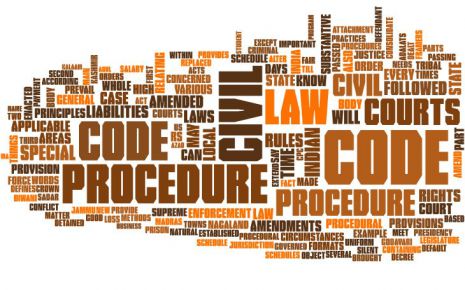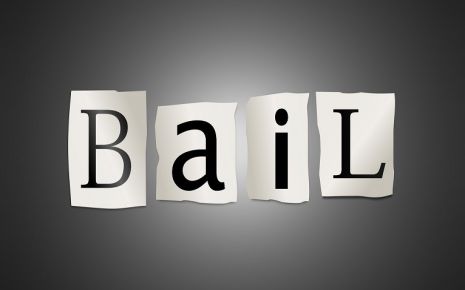Supreme Court Advocates-on-Record Association v/s Union of India (1993): Judicial Liberation-The Second Judges' Case and India's Legal Revolution
Background:
The Indian Supreme Court issued a highly significant decision in the case of Supreme Court Advocates-on-Record Association v. Union of India (1993). Commonly referred to as the second judges' case, this legal matter arose from the idea of "freedom," not for an individual but for an entire branch of the government, specifically the judiciary from the executive.
The stance of the Supreme Court was subject to criticism in the initial judges' case, and ultimately, the verdict rendered by the Supreme Court in the SP Gupta case, specifically the First Judges case of 1981, by a seven-judge panel was reversed by a nine-judge panel in the current case. This case marks a significant turning point in Indian history, as it signifies the judiciary's emancipation from the influence of other branches of government.
Facts Of The Case
The current issue arose from a petition submitted by the Supreme Court Advocate on Record Association, which raised concerns about the nomination and transfer of judges in the Indian higher judiciary as well as the existing vacancies. The Supreme Court, in order to address this petition, deemed it necessary to reconsider its prior ruling in the SP Gupta case. Consequently, a panel of nine judges was established to make a decision on the matter. The SP Gupta ruling of the Supreme Court has faced significant criticism, even to this day. It is argued that the verdict clearly contradicted the idea of separation of powers, among other concepts that today form part of the fundamental construction of the Indian constitution.
Provisions and principals implicated:
The justices in the current case held the view that the judicial appointment procedure at that time was riddled with numerous deficiencies. They considered that the Supreme Court made a significant error by interpreting "consultation" as "concurrence" in the SP Gupta case. They advocated for an increased role of the judiciary in the judges' appointment process, surpassing its current level of involvement.
They argued that the Chief Justice of India should have final say in the appointment process, even if the administration makes the appointment, in order to uphold the separation of powers and ensure the judiciary's independence from other branches of government.
The dissenting opinions expressed by Justice P.B. Sawant and Justice G.N. Ray were not overlooked. They recognised that the majority favoured the establishment of a distinct entity, namely a collegium, for the selection of judges. However, they foresaw that this would potentially lead to increased favouritism and undermine the transparency that the court aims to achieve.
Judgement
A panel of nine judges arrived at the decision with a 7:2 majority.
The judgement pertains to the following:
Conclusion
Ultimately, a new entity called Collegium was established to oversee the selection and relocation of judges. This case upheld the autonomy of the court and ensured that the decision-making process stays under the control of the most seasoned judges, guaranteeing the fairness of the rulings. The third judges' case in 1998 and the fourth case in 2014 furthered the development of the collegium as a significant turning point in the autonomy of the judiciary in Indian history.
Judgement According To Me:
The verdict rendered in this case was crucial, not only for the present circumstances but also for future implications. Establishing a solid foundation is crucial for constructing a building. In my view, the independent judiciary and the separation of powers clearly define the moment at which the executive branch must cease its involvement in the selection process.
Nevertheless, I believe that concentrating power in the hands of a select few, namely the collegium, has the potential to be detrimental, as it creates an ideal environment for nepotism and the proliferation of political ideas inside the court. From my perspective, the case effectively achieved judicial independence; however, it fell short of establishing transparency in the nomination process.
The Indian Supreme Court issued a highly significant decision in the case of Supreme Court Advocates-on-Record Association v. Union of India (1993). Commonly referred to as the second judges' case, this legal matter arose from the idea of "freedom," not for an individual but for an entire branch of the government, specifically the judiciary from the executive.
The stance of the Supreme Court was subject to criticism in the initial judges' case, and ultimately, the verdict rendered by the Supreme Court in the SP Gupta case, specifically the First Judges case of 1981, by a seven-judge panel was reversed by a nine-judge panel in the current case. This case marks a significant turning point in Indian history, as it signifies the judiciary's emancipation from the influence of other branches of government.
- Judges: A nine-judge bench consisting of Justice M.N. Venkatachaliah, Justice
A.M. Ahmadi, Justice J.S. Verma (who wrote the decision), Justice S.P. Bharucha,
Justice Kuldip Singh, Justice P.B. Sawant, Justice N.P. Singh, Justice G.N. Ray,
and Justice B.P. Jeevan Reddy heard the case.
- Overruled: A higher court has invalidated or overturned SP Gupta v. Union of India, reported in AIR 1982 SC 149.
Facts Of The Case
The current issue arose from a petition submitted by the Supreme Court Advocate on Record Association, which raised concerns about the nomination and transfer of judges in the Indian higher judiciary as well as the existing vacancies. The Supreme Court, in order to address this petition, deemed it necessary to reconsider its prior ruling in the SP Gupta case. Consequently, a panel of nine judges was established to make a decision on the matter. The SP Gupta ruling of the Supreme Court has faced significant criticism, even to this day. It is argued that the verdict clearly contradicted the idea of separation of powers, among other concepts that today form part of the fundamental construction of the Indian constitution.
Provisions and principals implicated:
- Items included
- Article 50: Judicial Independence from Executive Control
- Article 124 of the constitution deals with the process of appointing judges to the Supreme Court.
- Article 217 of the constitution deals with the process of appointing judges in high courts.
- Article 222 pertains to the transfer of judges.
- Principles at play
- Regarding the transparency of the appointment procedure, the rule of law was considered.
- Separation of Power: This involves identifying the respective roles of the executive and legislature in the appointment process.
- Judicial independence
- These points were the focal points of the conversation, among many others.
- Is the term "consultation" in the Indian Constitution synonymous with "concurrence" when it comes to the appointment and transfer of judges?
- Does the existing executive function violate the principle of separation of powers and infringe upon the independence of the judiciary?
The justices in the current case held the view that the judicial appointment procedure at that time was riddled with numerous deficiencies. They considered that the Supreme Court made a significant error by interpreting "consultation" as "concurrence" in the SP Gupta case. They advocated for an increased role of the judiciary in the judges' appointment process, surpassing its current level of involvement.
They argued that the Chief Justice of India should have final say in the appointment process, even if the administration makes the appointment, in order to uphold the separation of powers and ensure the judiciary's independence from other branches of government.
The dissenting opinions expressed by Justice P.B. Sawant and Justice G.N. Ray were not overlooked. They recognised that the majority favoured the establishment of a distinct entity, namely a collegium, for the selection of judges. However, they foresaw that this would potentially lead to increased favouritism and undermine the transparency that the court aims to achieve.
Judgement
A panel of nine judges arrived at the decision with a 7:2 majority.
The judgement pertains to the following:
- The collegium system refers to the suggested method of appointing and transferring judges in the judiciary. The committee would consist of the most senior judges from the relevant High Court or Supreme Court, who would provide guidance to the executive on the nomination.
- The role of the Chief Justice of India is viewed by the majority of the seven justices as a concurring role rather than a consultative role in the selection process. They argue that The "advice" offered by the Chief Justice of India to the president should carry more weight and agreement.
- Judicial independence: The general opinion is that the executive branch should have a limited role in following the judgements made by the Collegium. Additionally, the court's most senior judges should be in charge of the judge-name selection process. This would ensure that the appointment process remains unaffected by the impact of other organs.
Conclusion
Ultimately, a new entity called Collegium was established to oversee the selection and relocation of judges. This case upheld the autonomy of the court and ensured that the decision-making process stays under the control of the most seasoned judges, guaranteeing the fairness of the rulings. The third judges' case in 1998 and the fourth case in 2014 furthered the development of the collegium as a significant turning point in the autonomy of the judiciary in Indian history.
Judgement According To Me:
The verdict rendered in this case was crucial, not only for the present circumstances but also for future implications. Establishing a solid foundation is crucial for constructing a building. In my view, the independent judiciary and the separation of powers clearly define the moment at which the executive branch must cease its involvement in the selection process.
Nevertheless, I believe that concentrating power in the hands of a select few, namely the collegium, has the potential to be detrimental, as it creates an ideal environment for nepotism and the proliferation of political ideas inside the court. From my perspective, the case effectively achieved judicial independence; however, it fell short of establishing transparency in the nomination process.
Law Article in India
Legal Question & Answers
Lawyers in India - Search By City
LawArticles
How To File For Mutual Divorce In Delhi

How To File For Mutual Divorce In Delhi Mutual Consent Divorce is the Simplest Way to Obtain a D...
Increased Age For Girls Marriage

It is hoped that the Prohibition of Child Marriage (Amendment) Bill, 2021, which intends to inc...
Facade of Social Media

One may very easily get absorbed in the lives of others as one scrolls through a Facebook news ...
Section 482 CrPc - Quashing Of FIR: Guid...

The Inherent power under Section 482 in The Code Of Criminal Procedure, 1973 (37th Chapter of t...
The Uniform Civil Code (UCC) in India: A...

The Uniform Civil Code (UCC) is a concept that proposes the unification of personal laws across...
Role Of Artificial Intelligence In Legal...

Artificial intelligence (AI) is revolutionizing various sectors of the economy, and the legal i...








Please Drop Your Comments